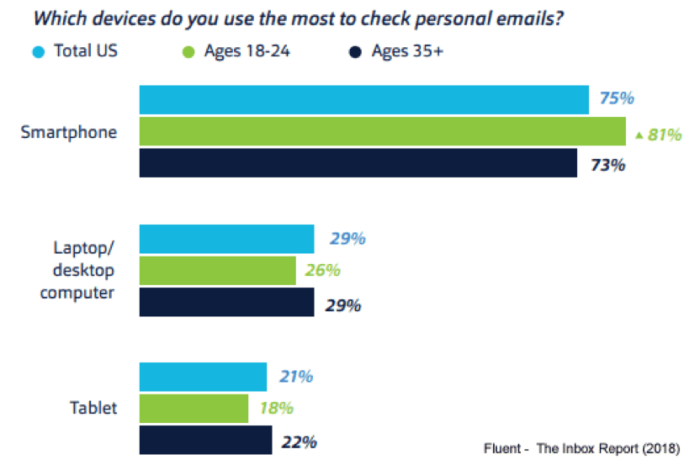90.
This is the average number of emails an office worker receives every single day.
That’s over 11 emails an hour if you’re working an average eight-hour day. It’s practically impossible to get on top of it, and it can often feel like you’re trying to wade uphill through toffee to get to that ever-elusive Inbox Zero.

Let’s face it, email takes up a ton of time. We feel the need to reply to even the shortest email just to “be polite”, and we get sucked into emails that aren’t even meant for us with the dreaded BCC feature.
But it doesn’t have to be this excruciating.
In fact, there’s one tool that’s power often goes untapped simply because it’s so much of an integral part of email that we simply overlook it time and time again.
What’s the tool? It’s your subject line.
If you’re anything like most professionals, you probably write hundreds of emails a week. But do you really think about the subject line? Or do you just whack any old text in it so it’s not empty?
If you’re guilty of this, you could be wasting even more time in your inbox than you are already. You see, the subject line actually carries a tremendous impact on whether an email will get opened in the first place, and then get acted upon.
Think about it: the first thing you see when you go into your inbox is a slew of subject lines.
It can be overwhelming staring into the abyss of unread email after unread email, but if there’s a decent subject line in there somewhere, it can stand out like the light at the end of the tunnel.
So how can you create these elusive subject lines that save you time and boost your email efficiency? We’ve got you covered.
1. Keep it Short
This goes without saying.
Most inboxes show about 60 characters of a subject line on a computer screen or just 25-30 on a mobile phone. This gives you around six to eight words to really pack a punch.

It doesn’t seem like much, but if you can parse what you want to say down into just a couple of key words, your email stands a higher chance of getting opened (and hey, it saves you time writing it, too!).
2. Front-Load It
And because so little of the email subject line gets read, it’s a good idea to put all the important words at the beginning so they’re certain to show up.
More than 50% of emails are opened on a mobile device, meaning that you have even less space to get your message across. By making sure you put the vitals at the start of your subject line, you’re increasing your chances of getting your email opened.
If you’re original subject line is “It’d be great to get your thoughts on the marketing slideshow”, try changing it to “Marketing slideshow thoughts”.
3. Use Logical Keywords
Here’s how you can make your subject lines work for you, as well as for your recipient.
Instead of using vague terminology in your subject line, use direct and logical keywords that are relevant to the content of the email. This means that when you try and find an email thread later, you won’t have to spend ages trying different searches to get it to show up.
Instead, you can punch in a couple of relevant words relating to the email content and, if you’ve put those in the subject line, it’ll show up immediately saving you potential hours of frantic searching.
This works for the recipient too because, let’s face it, most people don’t pay full attention to an email when they first receive it. Then, later down the line, they realize they need some information from your email or need to reply to it.
What do they do?
They try and search for it by using key terms relating to the content of the email or the task it’s attached to.

4. Indicate an Action
Need someone to take an action when they receive your email?
Most professionals will put their request in the body of the email which, more often than not, is scanned rather than read. This means that the important call-to-action gets missed and lost forever.
But, if the action is in your subject line, it’s much more visible to the recipient. In fact, it’s the first thing they see, so they go into your email knowing that you want them to take a specific action (and, more importantly, what that specific action is).
Instead of using a subject line like “Thursday meeting refreshments”, be more specific and put something like “Order snacks from Sally’s for Thursday’s meeting”.
This also works well if you need a reply.
You can save yourself and your recipient time by adding a simple “please reply” or a “reply not needed” to your subject line.
5. Use Subject Line Codes
This tip works better if there’s a whole team in on it, but if used consistently it can really make a difference to email efficiency.
What are subject line codes? You ask.
They are simple abbreviations of words or initials in the subject line that indicate what kind of email is being sent and what you expect the recipient to do with it.
For example, you might put “RB” at the beginning of the subject line, which stands for “reply back”. Or if there’s no action needed from your email but it’s important that the recipient reads it, you could add “NAN” at the beginning to stand for “no action needed”.
Subject Lines Are Your Friend
So many professionals overlook subject lines as just another nuisance thing to add to an email. But in fact, they are powerful little things that can be used to your advantage.
The way to an efficient inbox is to make life as easy as possible for you and your recipients, and that means making the most of your subject line. These are, after all, the first things people see when your email lands in their inbox.
By adding in clear action points, using logical keywords, and keeping things to the point, you’re going to get your emails read quicker and save yourself a ton of time having to chase people.
*** This is a guest post from Ryan Gould, Vice President of Strategy and Marketing Services at Elevation Marketing. From legacy Fortune 100 institutions to inventive start-ups, Ryan brings extensive experience with a wide range of B2B clients. He strongly believes in strategy, not just tactics, that effectively aligns sales and marketing teams within organizations. ***